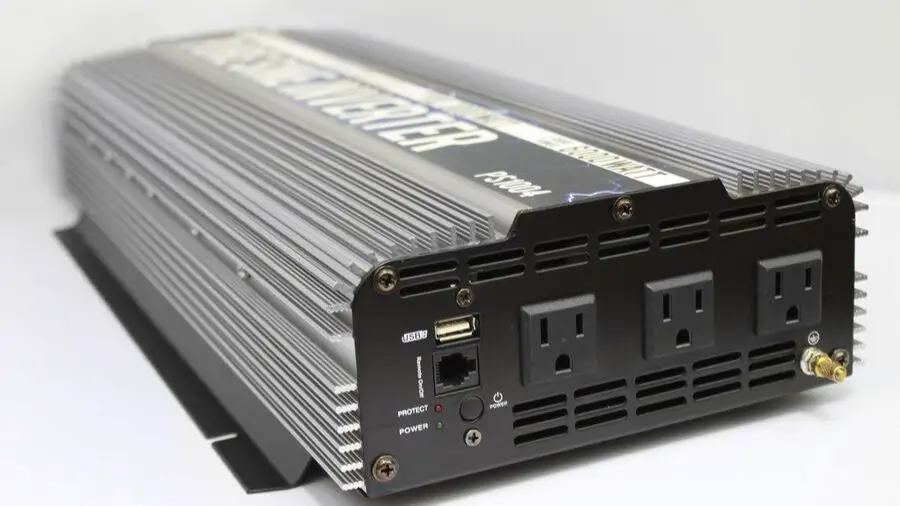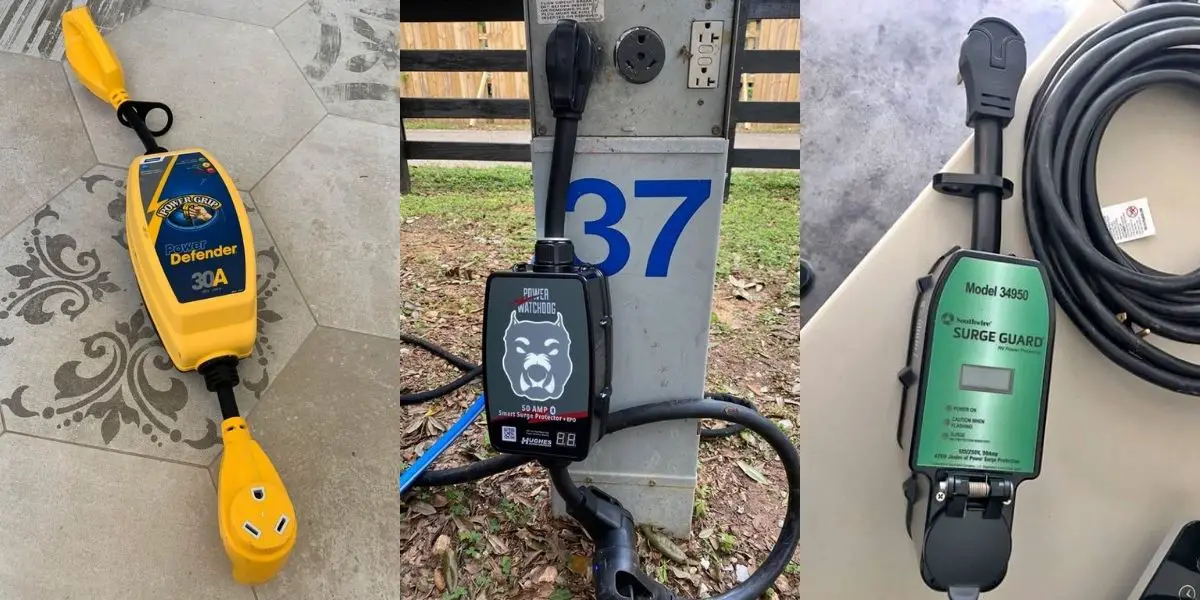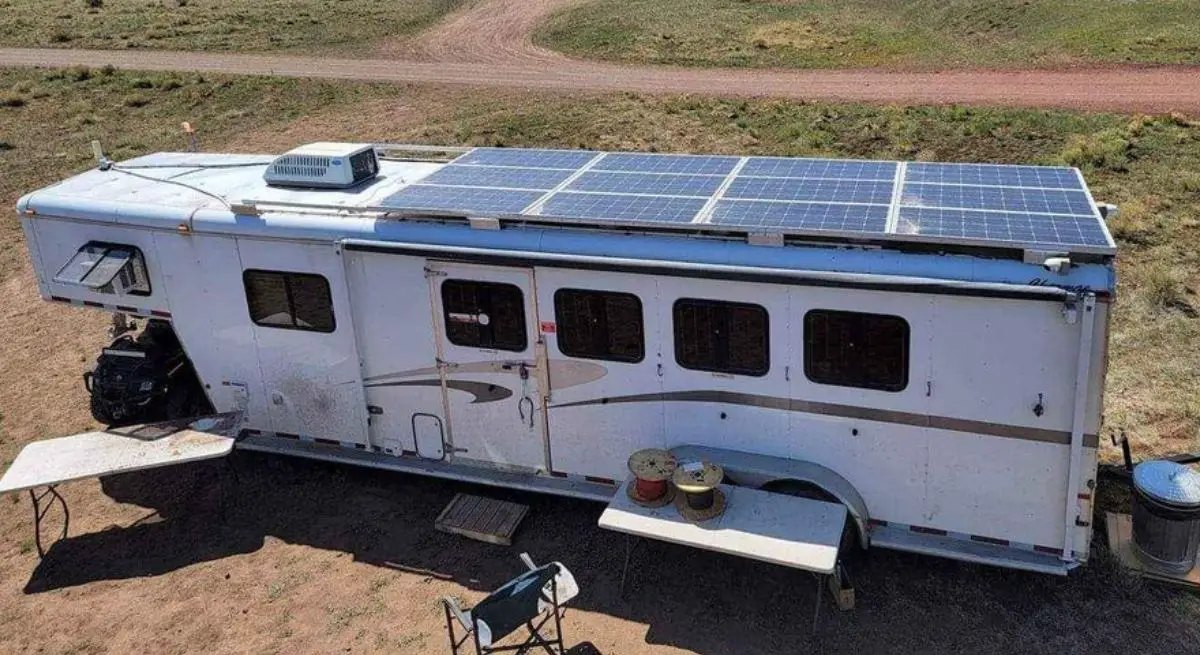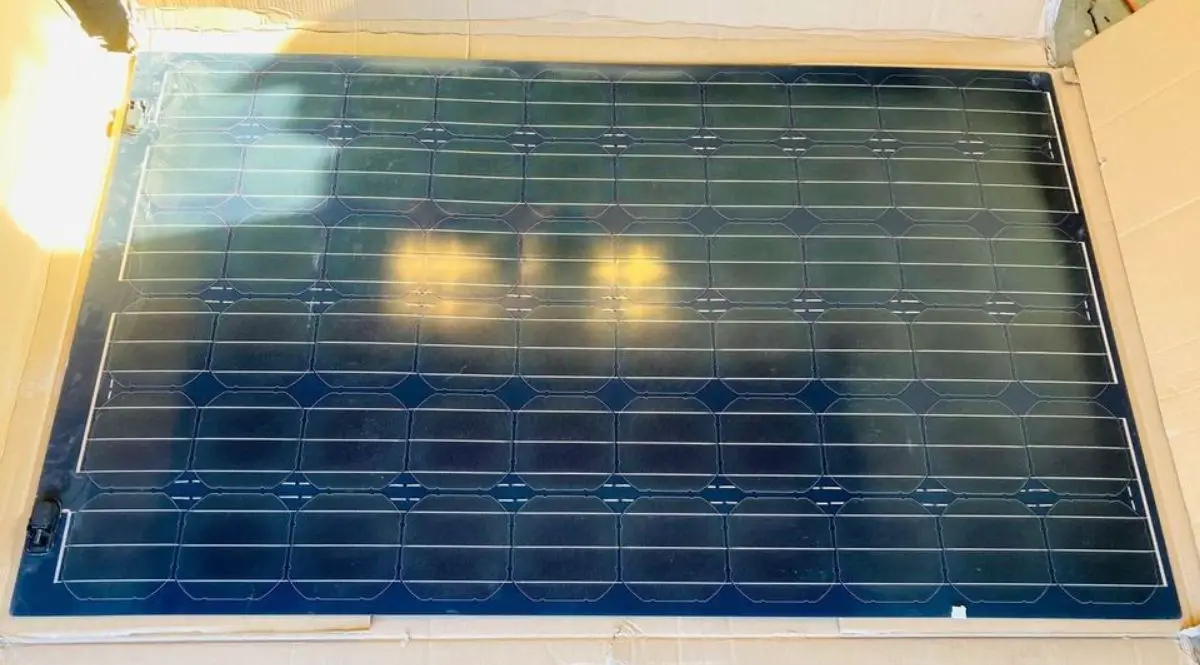Better known as a power inverter. An inverter in a motorhome converts direct current power, such as from your batteries, to alternating current power to provide electricity to your motorhome.
It is usually located between your 12-volt batteries and your 120-volt circuit breaker. In most motorhomes, the inverter is only used when your motorhome has to rely on the batteries for its electrical needs.
A motorhome inverter utilizes the 12-volt direct current (DC) power stored in your batteries and converts it to 120-volt alternating current (AC) power for use by your appliances. Inverters come in different watts; the amount of power produced per second. Most motorhomes sold today come standard with an inverter as do trailers. Inverters are not exclusive to motorhomes, though even though some people call it a motorhome inverter. It’s actually and inverter that converts DC power to AC power. Learning about inverters and the technical aspects can be helpful when you are out somewhere camping and you really need the power.
What is exactly is an Inverter?
The conversion of DC power to AC produces a wave called a sine wave. It can be in the form of a Modified Sine Wave or a Pure Sine Wave. If you are running electronic devices off your Inverter, you will want to opt for the more expensive pure sinewave inverter, as the modified sine wave inverters can produce noise that will sound like a buzz in some audio equipment. Modified Sine Wave converters can also damage delicate electric equipment. They range from 75 watts to 6000 watts. The smaller watt inverters are only capable of running very small AC appliances such as a TV or laptop. In most motorhomes, the standard inverters also run your lights, slides, and refrigerator. While larger, more elaborate watt inverters can run larger appliances that require substantial power such as an air conditioner. Substantial power use requires a large battery bank and other equipment that does not come standard with most motorhomes.
What Can An Inverter Do For You?
An inverter is a necessary piece of equipment that allows for extending and retracing your slides, keeps your refrigerator running so your food doesn’t spoil and turning on lights so you can see to move around your motorhome. When the engine is off and you are not connected to shore power, it takes on the job of providing you with basic, limited power. If you are unsure where your inverter is or even if you have one, check the owner’s manual that came with your motorhome. If you don’t have an owner’s manual, most manufacturers have a way to contact them via their website. Simply search for the home page of your motorhome’s manufacturer and navigate your way to their contact page. Some manufacturers have phone numbers that will allow you to call them. However, most require you to correspond through email or their online interface. The manufacturer of our RV allows us to email them questions. I have used this avenue to learn many things about our RV, as well as receive documents detailing the individual systems of my RV. You should be able to obtain documents with diagrams showing you were your inverter is.
Maintaining Your Inverter
Once you have located your inverter, make sure that it has good ventilation. Oftentimes inverters are in a “storage area.” Many people, however, may not know where their inverter is and store items around it. Your inverter needs to be well ventilated, so make sure you are not storing items on top of or in its immediate vicinity of your inverter. The vents of your inverter need plenty of room for air to pass freely through and around it. Make sure your batteries are in good condition, check your batteries water level, and use your inverter regularly. Most motorhome awnings are directly connected to the system powered by your inverter. If you can roll your awning in and out when your engine is not running and you are not connected to shore power then it is being powered by your inverter. Rolling your awning in and out regularly will help make sure your inverter is used regularly. This will help keep your inverter in good condition.
Pure Sine Wave vs. Modified Sine Wave
Pure Sine Wave inverters produce a smoothly curved, uniform wave providing more consistent, cleaner electricity. A Modified Sine Wave inverter produces a wave that looks “blocky”, producing electricity with sudden spikes and dips. Modified sine wave inverters are cheaper and what your motorhome will commonly come with as standard equipment. These inverters get the job done for most electrical appliances such as your refrigerator, water pump, and water heater. They are generally also safe for your televisions and radios. However, if you plan to use your inverter to run more delicate equipment, you may need a Pure Sine Wave inverter.
These Items must use Pure Sine wave
- Any electrical appliance with a thyristor.
- Laser printers.
- Computers.
- Fluorescent lighting.
- Battery chargers.
- Any appliance containing a microprocessor, such as a smart TV.
- Medical equipment.
There are also some newer appliances that require a pure sine wave to work properly. Whether or not you need a more expensive pure sine wave inverter will depend on what you plan to use in your motorhome.
What Is The Best Inverter For My Motorhome?
If your inverter needs to be replaced, I recommend replacing it with a high-quality inverter that has a reputation for lasting a long time with little maintenance or repair. The electrical specifications should match or exceed the current inverter. Anyone qualified to replace your inverter should also be qualified to ensure that your inverter will meet your electrical needs. TechON, AIMS, Ampeak, and VertaMax are some of the most highly recommended inverters. Just like any other purchase, durability and high performance comes with a price. If you are generally connected to shore power and rarely rely on your batteries to use your motorhome, you don’t need a top-shelf, high output inverter. You simply need one that will keep the power running to the vital elements of your motorhome when you have no other access to electricity.

Can I Run My Air Conditioner On My Inverter?
Generally, the answer is no. In most cases, your air conditioner will not be wired to your inverter. Even if it was wired to work, the electricity draw would quickly deplete your batteries causing irreversible battery damage. Most motorhomes come with a very simple set up for using your inverter and batteries to power your motorhome. Manufacturers tend to intentionally wire your motorhome so that you will not be able to use large appliances, such as your air conditioner when no other power is available. The basic electrical system powered by your inverter is not intended to run high draw appliances such as microwaves and air conditioners. If you want to know what your batteries and inverter power, simply un-plug your motorhome from the shore power and turn off the engine. Likely, you will find that your lights, refrigerator, and slides still work. You may find that some or all your electrical outlets still work. But in general, most other things that require electricity will not work.
I Want To Run More Appliances From My Inverter?
If your initial reason for asking about your inverter is because you want to use it to run more things in your motorhome, you have some research ahead of you. “Boondocking”, or living off the grid, takes a lot more than a powerful inverter. While you will need a much more powerful inverter, you will most likely need an entirely new configuration for your electrical system, along with a lot of new equipment. Hiring a professional to do this work for you is recommended, but it is helpful that you have a basic understanding of how your motorhome works before deciding on any changes. A few internet searches and even a small amount of self-education will make it clear that it can be a very complicated subject. From determining what your power needs will be and what you are willing to live without, to how you will gather, store, and use the electricity you will need, is a sizable project. The size and quality of the inverter you need will depend on many factors; however, it will only be a small part of a much larger upgrade to your overall electrical system.

Upgrading your inverter can allow for more “off the grid” use of your motorhome. You will also need to increase the capacity or number of batteries to avoid depleting and damaging them. Consult with a licensed electrician before you attempt any alterations to your motorhome’s electrical system.
Deciding On The Best Inverter
Once you have determined what your inverter powers in your motorhome you can decide if your current set up meets your needs. When locating your inverter you can determine whether or not you have a Modified Sine Wave inverter of a Pure Sine Wave inverter. If you plan to use your electrical outlets to power delicate electronics from your inverter, you may need to upgrade to a Pure Sine Wave inverter. When planning to upgrade, you should consult with a professional and research the best model for your needs. If your inverter is not going to supply the off-grid electricity you desire, you now have a starting point to begin the process of upgrading your electrical system, including your inverter, to meet your needs. Whether you are connected to shore power or Boondocking in the woods, you need to understand and maintain your inverter to keep the good times rolling.
Let me know what you think about this article?






